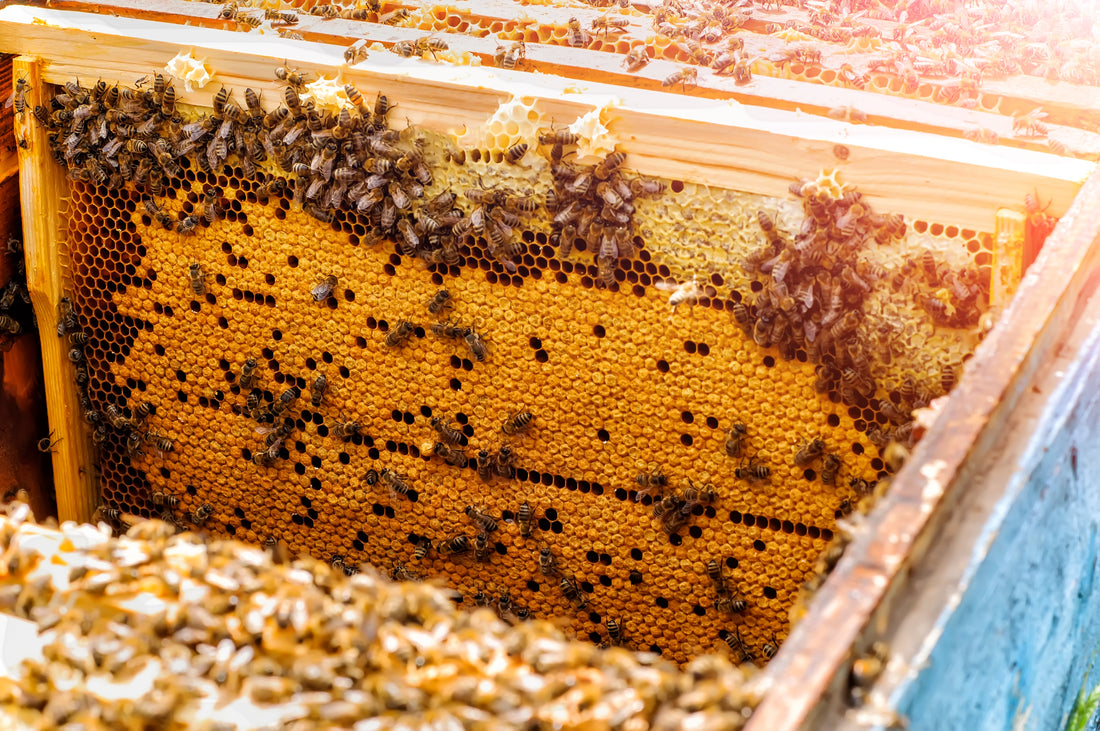Bees are one of the most fascinating creatures in the world, known for their ability to produce honey and beeswax. These products are highly valued for their unique properties and uses, and are widely sought after by humans. Bees create brood and honey comb to compose the super-structure of their hive. But what is the difference between the two? What purpose do they serve the honeybees and also how do we utilize the two differently?
What is Brood Comb?
Brood comb is a type of beeswax that is used by bees to raise their young. It is much darker in color than honey comb, often black, and much tougher in consistency. The comb is used to create a protected environment for the developing larvae. After repeated brood cycles, it takes on a husk like texture from the many cocoons the larvae matured within. This beeswax should never be used for applications by humans. When it is meltdown it has a dark color, smells of smoke, and is very unpleasant.
What is Honey Comb Beeswax?
Honey comb beeswax, on the other hand, is used to store honey and is much lighter in color than brood comb. Also known as capping wax, this beeswax is used to store the honey that the bees produce, and also provides structure and stability to the beehive. The bees are constantly producing this virgin beeswax comb structure when they are on a nectar flow. When this wax is melted down and filtered properly it smells of sweet light honey and possesses a beautiful yellow color. It is the most sought after beeswax produced by the bees and has many uses.
Conclusion
In conclusion, brood comb and honey comb are two varying types of comb that bees create in their beehives. While they are both used to support the survival and growth of the hive, they have different purposes and result in two wildly different quality waxes when melted down. Brood comb provides little to no utility to humans, where capping/honey comb beeswax yields amazing sought after quality wax. By understanding the differences between the two, we come to understand the levels of quality in the final product we use as humans use, what we should seek, and what to avoid.

